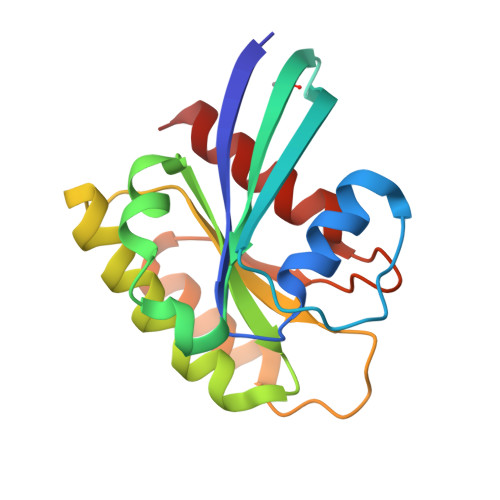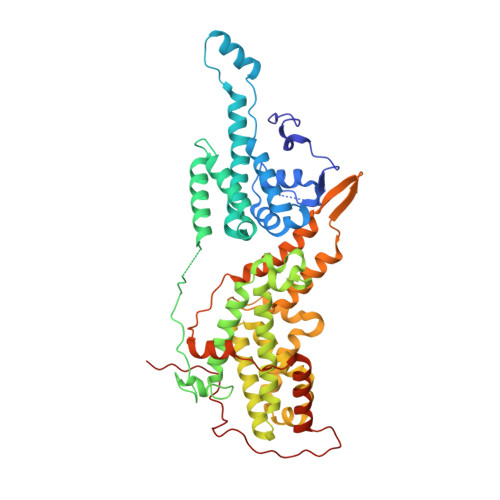Discovery of Aminopiperidine Indoles That Activate the Guanine Nucleotide Exchange Factor SOS1 and Modulate RAS Signaling.
Abbott, J.R., Hodges, T.R., Daniels, R.N., Patel, P.A., Kennedy, J.P., Howes, J.E., Akan, D.T., Burns, M.C., Sai, J., Sobolik, T., Beesetty, Y., Lee, T., Rossanese, O.W., Phan, J., Waterson, A.G., Fesik, S.W.(2018) J Med Chem 61: 6002-6017
- PubMed: 29856609
- DOI: https://doi.org/10.1021/acs.jmedchem.8b00360
- Primary Citation of Related Structures:
6BVI, 6BVJ, 6BVK, 6BVL, 6BVM - PubMed Abstract:
Deregulated RAS activity, often the result of mutation, is implicated in approximately 30% of all human cancers. Despite this statistic, no clinically successful treatment for RAS-driven tumors has yet been developed. One approach for modulating RAS activity is to target and affect the activity of proteins that interact with RAS, such as the guanine nucleotide exchange factor (GEF) son of sevenless homologue 1 (SOS1). Here, we report on structure-activity relationships (SAR) in an indole series of compounds. Using structure-based design, we systematically explored substitution patterns on the indole nucleus, the pendant amino acid moiety, and the linker unit that connects these two fragments. Best-in-class compounds activate the nucleotide exchange process at submicromolar concentrations in vitro, increase levels of active RAS-GTP in HeLa cells, and elicit signaling changes in the mitogen-activated protein kinase-extracellular regulated kinase (MAPK-ERK) pathway, resulting in a decrease in pERK1/2 T202/Y204 protein levels at higher compound concentrations.
Organizational Affiliation:
Department of Chemistry , Vanderbilt University , Nashville , Tennessee 37232-0146 , United States.























